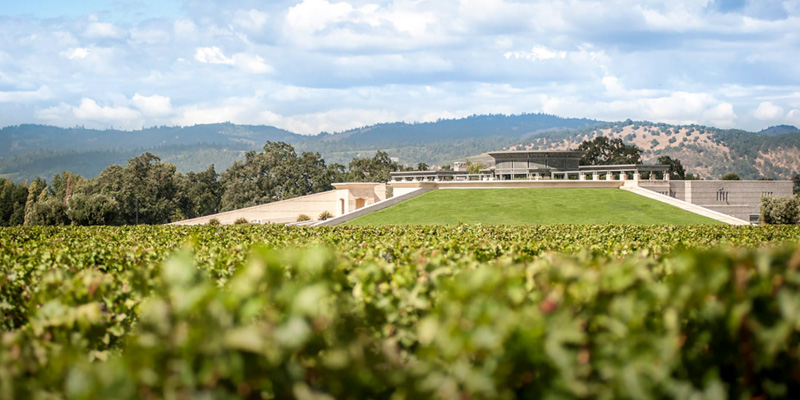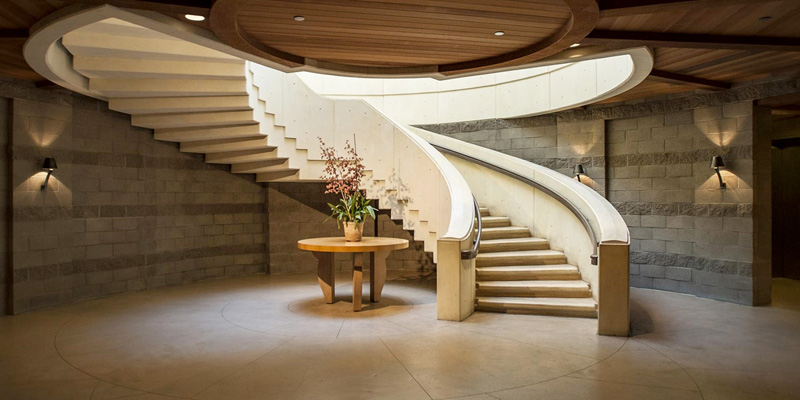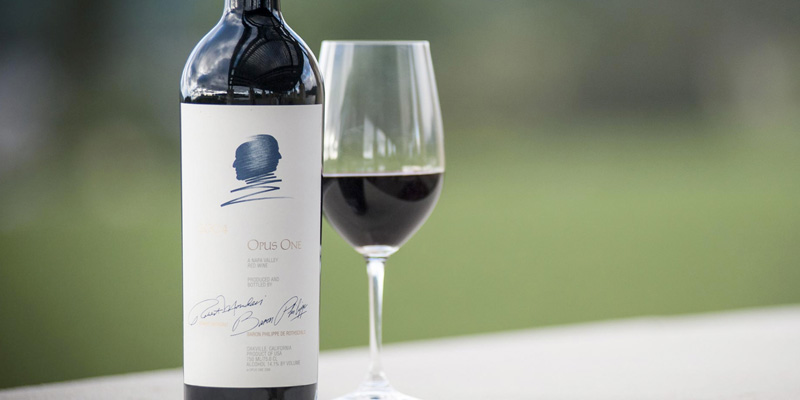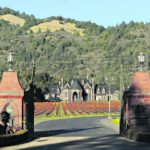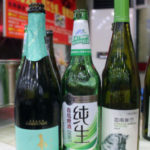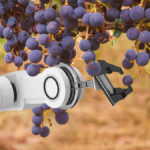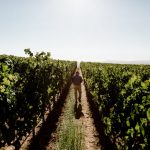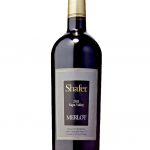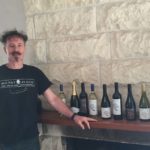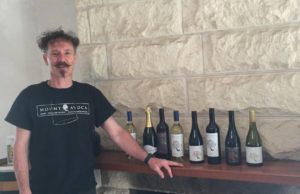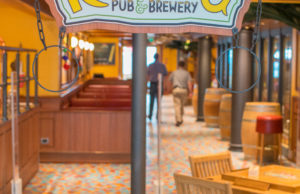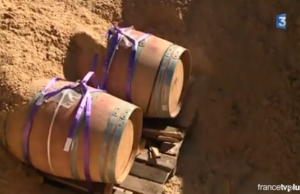The Technologies That Make This Wine So Expensive
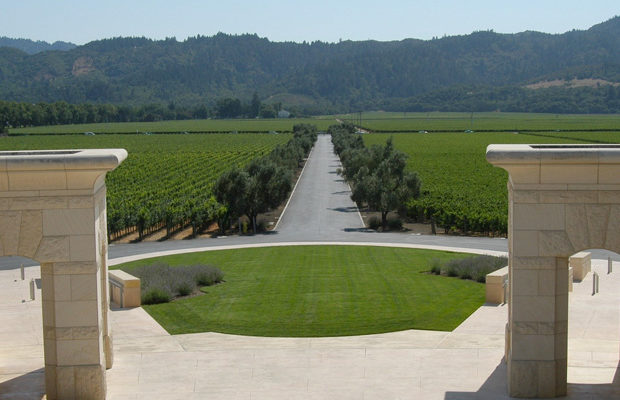
If you’ve ever wondered what the hell makes one wine cost $600, welcome to the club! Sometimes, the price tag on expensive wine comes down to technology, or at least is justified by new and expensive tech. Some super-premium wine brands that charge upwards of $200 invest heavily in winery gadgets that take the guesswork out of the cellar. In these cases, it’s how the the juice gets into the bottle that drives price tags sky-high.
Like Waygu beef farmers, these winemakers start out with careful work in the vineyards, coming just short of massaging the vines. But the real magic in making super-premium brands happens off the vine, a process I witnessed first hand at Napa Valley’s Opus One last week.
Arriving at Opus One is like showing up at the Colosseum. A huge, semi-circular stone structure greets visitors at the end of what feels like a mile-long driveway. Naturally, there’s classical music being piped onto the patio, where century-old olive trees are roped in holiday lighting.
Enter the stone facade and you’re greeted by two impeccably dressed men who speak softly over that same Mozart. They deliver a brief history of the iconic Napa estate, which was formed between Robert Mondavi and Baron Phillippe de Rothschild of the famous Mouton Rothschild winery in Bordeaux, France. And then, the real fun begins.
Since 1978, the goal of Opus One has been to create wines that embody the best of Napa Valley in a Bordeaux style. In short, that means Opus One is always a Cabernet-based blend aged in new oak, and (like many Bordeaux wines) the exact blend changes every year. Both Mondavi and Rothschild had decades of experiences when the partnership began, and you can feel it inside the winery.
The teams spent 13 years designing and building their state-of-the-art facility, where machines take human guesswork out of the equation. To begin with, the estate-grown grapes are harvested at peak ripeness in lots of anywhere from five to 60 tons, and each one is sorted and fermented separately. This is a practice most winemakers praise but few have the space and flexibility to perform, thanks to the cramped quarters of most wineries. That means that at Opus One, there are over three dozen giant steel fermentation tanks all being monitored and tended separately during harvest.
When each lot arrives, the berries are dropped into a sorter, like at most wineries. But that’s where the likenesses end. Most premium wineries sort grapes by hand, with workers removing bad berries, stems, and bugs as they bounce down a conveyor belt. At Opus, the grapes are rolled into a custom-made optical sorter.
This giant blue machine holds each berry in place, the way a ring holds gemstones in place, and presents each one to a camera that analyzes the size, shape, and color of each and every grape. Bad berries are literally blasted away by tiny air cannons, so only perfect grapes make it into the crusher.
Once gently broken, the lots are poured through the floor into individual tanks. Instead of pumping wine across the winery and into tanks, Opus One has circular openings into the base of the sorting floor. The winemakers place their tanks underneath so that grapes can be easily dropped into their tanks on the lower floor. You won’t see any interns or assistants climbing up tanks or lugging hoses around here.
They also take their yeasts seriously. In 2013, the company went as far as hiring an in-house microbiologist to study the ambient yeasts in and around the vineyards and winery. Now, of the 100 yeast species discovered, the winery propagates six for traits like resistance to bacteria, or off aromas. Instead of relying on a single strain or mysterious native yeasts like most winemakers, Opus carefully curates the exact mix.
From 56 vineyard blocks, 40 base wines emerge. Once the transition from juice to wine or fermentation has started, winemaker Michael Silacci starts tasting in the lab. And the Opus lab isn’t just a pile of chemistry equipment in a corner. The room is equipped like a college lab. The proprietors even installed a skylight over the blindingly white work table, so the color of each wine can always be analyzed under natural light. Day after day, each lot is tasted and eventually blended into what becomes the single Opus One wine released each year.
And that’s the short version of Opus One winemaking. They use up to 14 barrel makers to achieve a variety of flavors in their oak, and go through 1,000 new barrels per year. They press individual lots in small basket presses instead of large, efficient pneumatic presses. Walking through the seemingly endless barrel room, the equipment alone represents millions of dollars. All that money goes to sorting the best grapes from great vineyards.
After being walked through the winery, where every nosey winemaking question was answered thoroughly, I’m embarrassed to admit I thought this wine might be all oak, flashy labels, and big fruit. Does fancy equipment really make a big difference, I wondered? Or are these wines, like so many big Napa reds, all hype and Parker scores?
Quite the contrary. All that careful design and focus on good winemaking technology comes out in Opus One’s favor. The 2013 Opus One I tasted was intensely earthy, with smooth plum flavors and tannins that were far from overpowering. Despite spending just two months in bottle, this wine wasn’t overpowered by oak or fruit, but was fresh and aromatic. I could go on, but suffice it to say this wine was freaking delicious.
Most days, we’re searching for the T.J. Maxx of wines: a purveyor that delivers great flavors and the style we love at a delicious price. The Opus Ones of the world represent major splurges, like those $400 boots we must have. But expensive wines can be damn good when well made, and snobbiness isn’t a prerequisite. For comparison, Opus One still comes in below many Napa Cabs and premium wines from Europe.
Most of us can’t enjoy these wines regularly; if the $280 price tag won’t stop you, the limit of six bottles per customer will. But they do prove that technology in winemaking is worth the capital outlay, and makes a tasteable difference in the final product.

